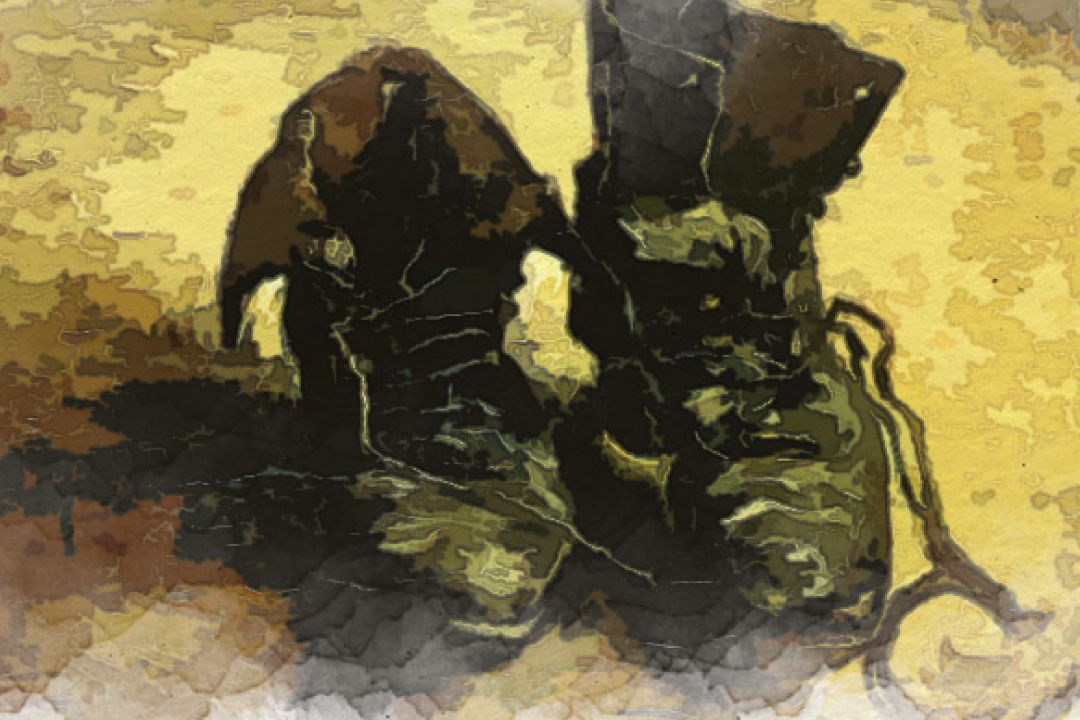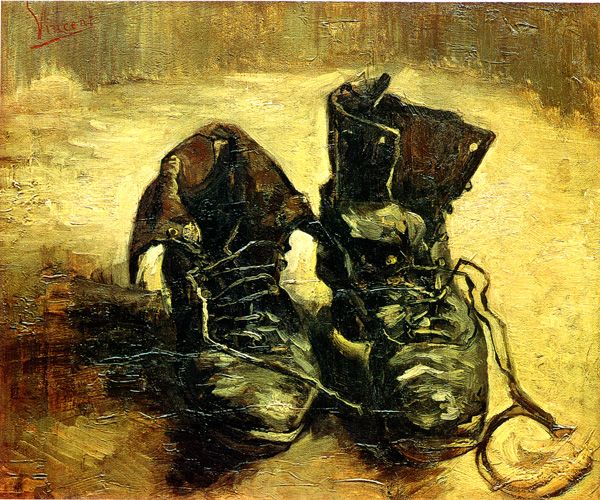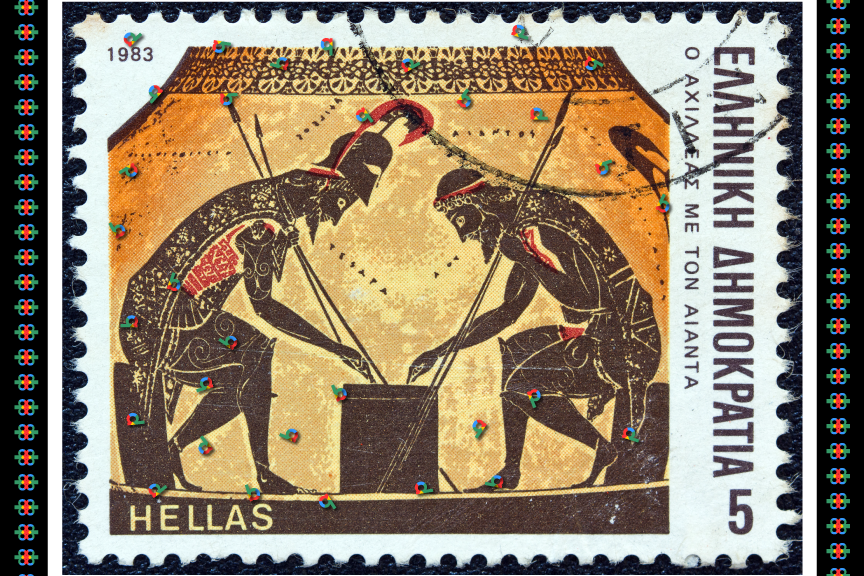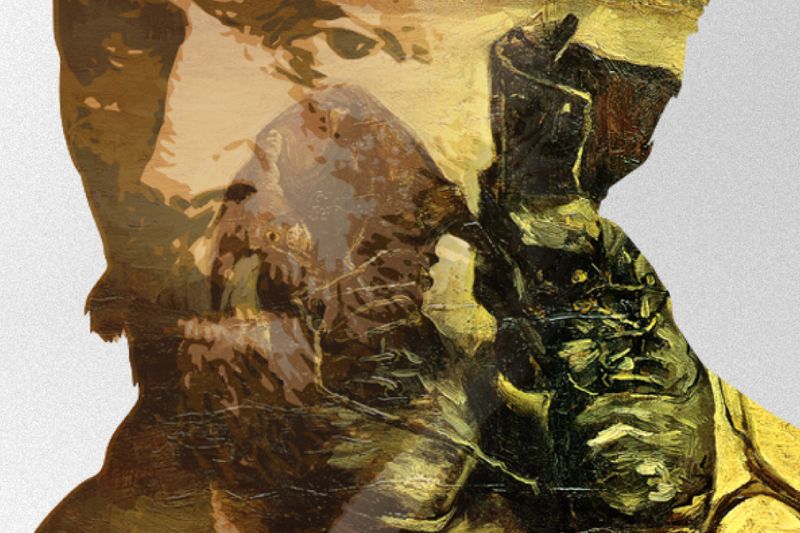Uphill Both Ways

"A Pair of Shoes" (1886) oil painting by Vincent Van Gogh. Used by Martin Heidegger in his exposition of the essence of art
In the amber light of her attic, Sophia found herself before a painting that whispered of bygone days. It was a raw, textured depiction of shoes, each scuff and stitch telling tales of the life they had journeyed through. This image brought to mind a famed artwork she had once read about, a piece that resonated with the essence of experience and existence, echoing the philosophical musings of Martin Heidegger on art. The painting, reminiscent of A Pair of Shoes (1886) by Vincent Van Gogh. Used by Martin Heidegger in his exposition of the essence of art,** had become a mirror reflecting Sophia's past—a series of moments, both poignant and mundane, that painted the portrait of her life.
These painted shoes, like silent sentinels, stood testament to the times Sophia had ventured through fields to her beloved riverside, the cobblestones where love first blossomed, and the earthy trails that bore witness to her laughter and tears. In them, she saw not just Van Gogh's legacy, but her own—the enduring spirit of a life richly lived and deeply felt.
Wandering through the village, a place woven into the fabric of her very being, Sophia reflected on a truth that had revealed itself throughout her years. It was encapsulated in the timeless words,
The road up and the road down is one and the same.
— Heraclitus (535-475 BC)
This thought, profound in its simplicity, had proven true time and again, from the aspirations that lifted her spirits to the trials that anchored her soul. She understood that the climbs and descents were not separate journeys but intertwined—two halves of a single path that had led her to where she stood now.
Each stride through the village resonated with memories: the bakery that once cradled her youthful dreams, the town hall that echoed her voice as a councilwoman. These were not mere locations but milestones along a road that was as much about the journey as the destination. In the wisdom of Heraclitus, Sophia found the harmonious balance between ambition and acceptance, a harmony that now rhythmically paced her every step.
On her morning strolls, Sophia often paused to observe the young Alexander, whose struggle with the ordinary task of tying his shoes was a spectacle of human perseverance. His determination was a daily drama played out beneath her neighborly gaze. It reminded her of the sentiment once voiced by a great thinker,
It took 10 months for me to learn to tie a lace; I must have howled with rage and frustration. But one day I could tie my laces. That no one can take from you. I profoundly distrust the pedagogy of ease.
— George Steiner (1929-2020)
Alexander's eventual mastery of the task was more than a personal victory; it was a triumph over the all-too-human urge to find the easy way out—a testament to the value of patience and effort.
Sophia's heart swelled with pride, not just for the boy's accomplishment but for the reminder it served of life's greater lessons learned through the smallest of victories. Each challenge overcome, from the mundane to the monumental, was a knot securely tied in the tapestry of their shared humanity.
The village square, a tableau of everyday magic, became the stage for a young girl's dreams. Lily, in her sparkling pink shoes, pirouetted around Sophia, her laughter mingling with the splashes of the fountain. It was here that Sophia remembered a poignant truth, once uttered by an icon of the silver screen,
Give a girl the right pair of shoes and she'll conquer the world.
— Marilyn Monroe (1926-1962)
Lily's shoes, aglow with the promise of adventure, were her chariot to the stars, her vessel to uncharted realms of imagination.
As seasons changed and the shoes were eventually outgrown, they were lovingly stowed away—treasures of a childhood replete with dreams. Sophia, the keeper of tales, watched as Lily's aspirations soared beyond the village, her 'moon shoes' a cherished memory of a time when anything seemed within reach. In the laughter and hopes of the young girl, Sophia saw the eternal dance of dreams and reality, and the enduring power of belief that propelled one to conquer not just the world, but the cosmos of one's own making.

The planksip Writers' Cooperative is proud to sponsor an exciting article rewriting competition where you can win part of over $750,000 in available prize money.
Figures of Speech Collection Personified
Our editorial instructions for your contest submission are simple: incorporate the quotes and imagery from the above article into your submission.
What emerges is entirely up to you!
Winners receive $500 per winning entry multiplied by the article's featured quotes. Our largest prize is $8,000 for rewriting the following article;

At planksip, we believe in changing the way people engage—at least, that's the Idea (ἰδέα). By becoming a member of our thought-provoking community, you'll have the chance to win incredible prizes and access our extensive network of media outlets, which will amplify your voice as a thought leader. Your membership truly matters!


